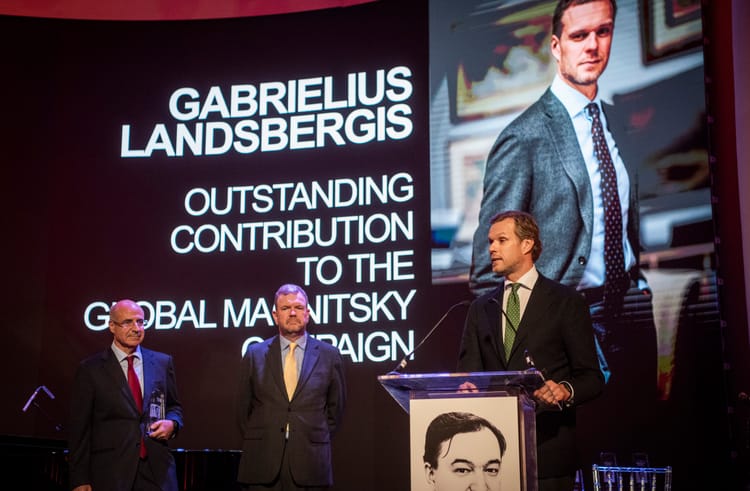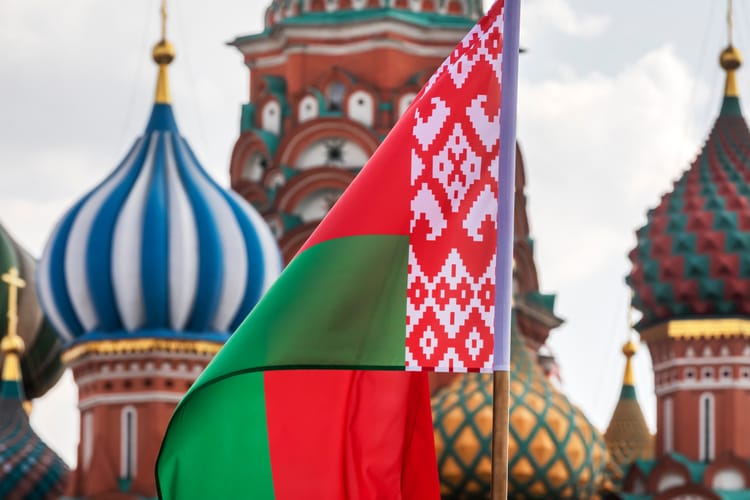The Truman Doctrine is dead and the Trump Doctrine is here
There are many uncertainties at the moment, but we can be fairly sure that the United States is not genuinely interested in a fair deal for Ukraine, because the United States has done nothing to indicate that or to move towards it. On day one, Trump let the world know that his priority was speed, not justice. Putin is in no hurry, so the only way Trump could get a quick deal was to push Ukraine for concessions. Putin’s full list of demands was adopted by Trump’s team, who began to echo and legitimise the key points—new elections, no NATO, annexations recognised.
Since then, what we’ve been watching is not a negotiation for peace in Ukraine, but Trump’s attempt to rearrange the European security architecture to Russia’s advantage. If successful, Ukraine would be the first victim of many. Witkoff, in his interview with Carlson, articulated what I believe is the current administration’s worldview—an endorsement of Putin’s claims in Ukraine and a legitimization of his genocidal agenda.
This is a 180° handbrake turn away from the Truman Doctrine, America’s historic 1947 decision to protect national security by assisting democracies threatened by autocracies. So what is going on that would trigger such a huge change in policy? In this article I will set out three possible explanations.
The Strongman Theory
The first possibility is that Trump, who sees himself as a post-liberal strongman, believes the world should be ruled by strongmen, specifically himself, Putin, and Xi. In this post-liberal world order, power determines legitimacy. Those with power can exercise it until their interests collide with another ruler’s. Borders become lines of demarcation between “kingdoms.” Those without sufficient power are left with one option: submission. This worldview aligns closely with Putin’s and Xi’s while simultaneously helping explain Trump’s claims regarding Canada, Greenland, and Panama. Under this new order, the US sphere of influence would absorb these areas, while Ukraine—and likely parts of Europe—would be sucked into Putin’s.
What we’re witnessing is a US withdrawal from “Putin’s” sphere. As the US leaves Europe, the continent could be reclassified as a grey zone: left to defend itself, or, if unable, to follow Ukraine into Russia’s zone of control.
It remains to be seen to what extent US commitments to Indo-Pacific partners remain intact. But we must be reminded: NATO and Article 5 have long been the gold standard of security arrangements. If that fractures, it’s only fair to question US credibility in the Indo-Pacific as well.
The Reverse Kissinger
The second possible explanation is that Trump has been convinced to try a “reverse Kissinger” approach—that the US might woo Russia away from China. This would be a sizable challenge. The “no-limits” partnership between Russia and China means Beijing backs Moscow’s war in Ukraine, and in return, Russia would likely help China by creating trouble in Europe and Japan if China moves on Taiwan. The partnership has benefited both parties, and there’s no visible rift between them. To try to split these allies and complete the “reverse Kissinger”, the US would need to become Russia’s new strategic partner—replacing China, not merely joining the alliance.
This would require huge geopolitical concessions. In short: a free hand for Russia in Europe, total US disengagement from the EU, and possibly even tacit support for Russia’s ambitions. This would amount to the creation of an anti-liberal alliance—abandoning a key US ally and strategic pillar. I’m not saying this will happen, but if Russia were to consider switching allegiances, it would likely demand such terms. And even then, there’s clearly no guarantee Russia would follow through.
As I’ve argued before, this US-Russian realignment has far more in common with the Molotov-Ribbentrop Pact than with Kissinger’s rapprochement vis à vis China. Molotov and Ribbentrop divided Eastern Europe into spheres of influence between two authoritarian powers. The pact collapsed violently when one party—Nazi Germany—decided to betray the other first. What followed was devastation. Such pacts are temporary conveniences based on mutual distrust and ambition, and they tend to fall apart violently. The same is clearly possible now—it is apparent that Russia would pocket everything offered by Trump and would still continue doing whatever it deemed most beneficial for its regime.
What’s less clear is how China would respond to such a US effort. Beijing has invested heavily in its “no-limits” partnership with Moscow, which has brought it both strategic distraction in Europe and diplomatic cover in multilateral forums. If it began to doubt Russia’s loyalty, China would likely use all available leverage over its junior partner to ensure nothing unexpected unfolds. It could also see the moment as an opportunity to double down on its own ambitions regarding Taiwan and possibly other countries in the neighbourhood. In either case, the idea that Beijing would sit by idly while its most important wartime ally is courted away by Washington seems dangerously naive.
There was another way to drive a wedge between Russia and China: coercion. If Russia were losing in Ukraine, it would be in a much worse position to help China in Taiwan. The US could then have applied leverage—serious support to Ukraine, additional sanctions, international isolation—to compel Russia to accept neutrality. Military support for Ukraine would have delivered stronger, more reliable results than attempting to bribe Russia into partnership.
But what is happening is even worse; by choosing appeasement over deterrence, the US is alienating its most important partner—the EU.
There is still time for the US to change tack, but it seems unlikely at this point. The “reverse Kissenger” would be unlikely to succeed, and anyway it’s not clear what the US would gain by handing Europe over to Russia. If the US is still expecting to confront China over Taiwan, there would be the risk of facing two adversaries—both Russia and China—while having few allies left, if any. Europe, and potentially Japan, would be too preoccupied with a strengthened Russia to contribute meaningfully to US efforts in the Indo-Pacific.
The No Plan Plan
There’s also a third scenario — that there is no grand plan at all. Perhaps US policy is being shaped ad hoc, based on Russian propaganda narratives, personal vendettas, and situational whims. This cannot be ruled out. As Trump himself said about his style, in “The Art of the Deal”:
“I usually arrive at my office by nine, and I get on the phone. There’s rarely a day with fewer than fifty calls, and often it runs to over a hundred. In between, I have at least a dozen meetings. The majority occur on the spur of the moment, and few of them last longer than fifteen minutes.”
Good guys gonna lose?
All three scenarios ultimately serve China’s interests. On the “strongman” timeline, the US refrains from challenging Beijing’s ambitions in the Indo-Pacific. On the “reverse-Kissenger” timeline, China faces a distracted and isolated America. On the “no plan” timeline, the chaos is unlikely to be beneficial to the man with no plan. Either way, Beijing wins.
For Europe, all timelines are disastrous—unless the continent rapidly rebuilds its military power. Europe’s much trumpeted five-to-ten-year defense buildup may come too late. Putin is unlikely to politely wait for Europe to get stronger before he pushes forward.
Whichever thinking truly drives the actions of the current US administration, one thing is clear: the era of the Truman Doctrine is over. It is no longer the position of the US government that totalitarian regimes oppressing free peoples are a threat to international peace which therefore undermines American interests. The new Trump Doctrine appears to suggest the opposite—that the actions of free peoples resisting totalitarian regimes disrupt the “natural order” and thus run counter to US interests.






Member discussion